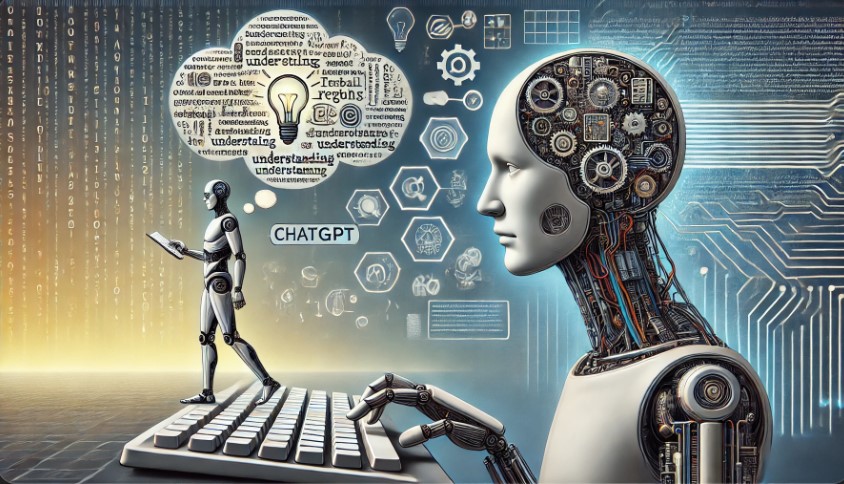The Limits of Language Mastery: Understanding GPT's Capabilities

Artificial intelligence (AI) and machine learning (ML) have seen significant advancements in recent years, with models like OpenAI's Generative Pre-trained Transformer (GPT) leading the charge. From generating human-quality text to tackling complex problems, GPT showcases impressive abilities. However, discussions surrounding GPT often raise questions about its level of understanding. This blog will delve into the ongoing debate regarding GPT's capabilities and explore the reasons why OpenAI maintains that, despite its performance, GPT lacks true understanding and consciousness.
How Does GPT Work? A Look at its Core Functionalities
To understand why OpenAI argues GPT doesn't possess true understanding, let's explore how it operates. GPT is a type of language model built on the Transformer architecture. This architecture, introduced in a 2017 research paper, allows the model to focus on important parts of a sentence (like keywords) and consider the context in which those words appear.
GPT utilizes a training method called unsupervised learning. It's exposed to massive amounts of text data, ranging from books to web content. By analyzing these vast datasets, GPT learns to predict the most likely following word in a sequence. Through this process, GPT develops an understanding of how words and phrases typically relate to one another, enabling it to generate text that is both coherent and relevant to the context.
The Illusion of Understanding
GPT's outputs can be incredibly convincing, leading some to believe it understands the content it generates. However, this perception is an illusion. GPT's impressive text is the result of statistical patterns and probabilities derived from its training data, not from an actual understanding of the meaning behind the words.
GPT operates purely on syntactic manipulation. It processes input text and produces output text based on the likelihood of word sequences it has learned. For instance, if you ask GPT to write an essay about climate change, it will generate text that aligns with typical discussions on the topic. However, this generation is based on patterns in the data rather than a true comprehension of climate change as a complex concept with scientific intricacies and nuances.
The Chinese Room Argument
A philosophical thought experiment known as the Chinese Room argument, proposed by John Searle in 1980, can help illustrate why GPT lacks true understanding. Imagine a person inside a room who doesn't speak Chinese. They have a book of rules in English for manipulating Chinese symbols. When given a Chinese sentence, they use the rule book to produce an appropriate response in Chinese. To an outside observer, it might seem like the person understands Chinese, but in reality, they are merely following syntactic rules without any comprehension.
GPT functions similarly to the person in the Chinese Room. It generates responses that seem intelligent and contextually appropriate, but it does so without any semantic understanding. The model processes symbols (words) and applies learned patterns to generate outputs, but it doesn't grasp the meanings of those symbols.
Intentionality and Consciousness
Humans have the ability to focus on and think about specific things (intentionality). This allows us to understand concepts, form beliefs, and develop goals. GPT, on the other hand, lacks this capability. It doesn't have beliefs, desires, or intentions. It doesn't understand what it's generating or why.
For instance, when we read a news article, we use intentionality to understand the main points and form our own opinions. GPT, however, can't do this. It simply processes information based on learned patterns and generates text without any real understanding or goal in mind. It operates passively, lacking the mental faculties to comprehend or intend.
Another factor hindering GPT's understanding is its dependence on training data. GPT's knowledge is essentially confined to the information it has been exposed to during training. It lacks the ability to grasp the world beyond these data points. When GPT generates text about a subject, it's merely echoing patterns and information present in its training corpus.
For instance, if GPT's training data lacked information about recent scientific discoveries, it wouldn't be able to understand or discuss them. This dependence also introduces biases. Since GPT learns from human-generated content, it inherits the biases present in that data. These biases can manifest in its outputs, influencing the language GPT uses, the topics it prioritizes, or even the factual accuracy of its responses. Without true understanding, GPT cannot critically evaluate its training data or filter out these biases.
Human vs. Machine Understanding
Human understanding is a complex ability that goes far beyond simply processing information. We form connections between ideas, make inferences based on context, and apply past knowledge to new situations. Our understanding is also shaped by emotions, consciousness, and unique experiences.
GPT, however, operates in a fundamentally different way. It lacks the rich tapestry of experiences and emotions that influence human understanding. It doesn't have a sense of self or an awareness of its own existence. Its "knowledge" is superficial, derived from identifying patterns in data rather than a deep, cognitive engagement with the material. For example, humans can infer the meaning of an ambiguous sentence based on context, something GPT cannot do.
OpenAI's stance on GPT's lack of true understanding underscores the critical limitations of current AI technology. While GPT can generate impressive human-like text, it lacks the key aspects of human understanding: intentionality, consciousness, and the ability to grasp the deeper meaning behind words. It excels at pattern recognition and statistical prediction based on its training data. However, this doesn't translate to true comprehension.
Acknowledging these limitations is paramount for the responsible and ethical development of AI. As we push the boundaries of artificial intelligence, it's crucial to recognize the strengths of these models while maintaining a clear perspective on their functionalities and the potential implications of their use. This balanced approach will ensure AI advancements contribute positively to society.

